The American Writers Museum, located on 180 N. Michigan Ave., is currently closed to the public due to the pandemic. However, it is still available for private tours and events and is also offering virtual exhibits and information on its website.
Four journalists from Columbia College Chicago explored the “Tools of the Trade” virtual exhibit, available any time for free on Google Arts & Culture.
The tools in this exhibit were all used by writers who sought to express ideas they found fundamental to their understanding of the human condition, and these tools defined how the choice of one method over another can influence the writing process, according to the American Writers Museum.
Tools of the Trade
By Nell Ambrose
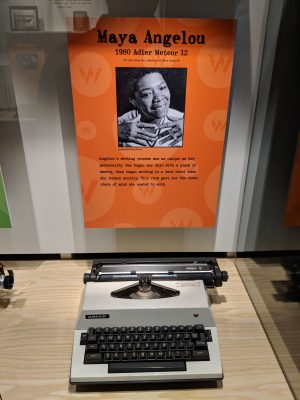
Writers have always had an intimate relationship with their typewriters, and the “Tools of the Trade” exhibit allows visitors to imagine a famous author, poet or songwriter sitting down and typing away.
The exhibit focuses on typewriters and other writing implements of the past previously owned and used by Ernest Hemingway, Orson Welles, Maya Angelou and many others.
It starts off with one-minute audio introductions to each of the writing tools included in the exhibit, focusing on the authors who used them. Then it provides a 30-minute video tour guided by Christopher Burrow, the director of operations and curator of the exhibit, who, passionate about these historic machines, shares some of the stories behind them and how they evolved through time.
“Typewriters are part of people’s lives in a lot of ways,” Burrow said. “The rhythm and the sound and the feel can be very rewarding in their own way.”
Despite advances in technology, people such as Maya Angelou still preferred using typewriters instead of laptops and iPads. Every month, she would rent a hotel room to have a private space for her and her typewriter.
“She would drink some sherry, and she would write,” Burrow said. “It was just those two, coming up with all her stories, all her poems, all her ideas. Just those two,” he added regarding her relationship with her typewriter.
Some writers had a very particular way of using their typewriters. Ernest Hemingway wrote standing up, and because he typed very forcefully, Burrow said the platen on his typewriter — the rubber cylinder under the paper — is imprinted with letters.
This unique exhibit is only one of the reasons to visit the American Writers Museum.
“We celebrate all kinds of writing,” Burrow said. “We wanted to excite people so they either will start reading something they hadn’t thought of, or something they should have read before, or they would be inspired to start writing on their own.”
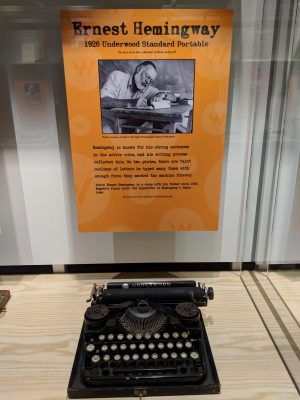
Taking care of the tools of our trade
By Lily Carlson
“The world is not a dark place,” can be found engraved on John Lennon’s typewriter. These words provide comfort amid the pandemic.
Burrow found similar exciting discoveries while creating the exhibit of tools belonging to an array of notable American writers.
Burrow discovered that many visitors have general awe for Hellen Keller’s braille writer, which she used to write her speeches.
“Hellen Keller was a real stickler and she didn’t want to make any mistakes as a representative of her community,” Burrow said. For that reason, Keller had all her speeches proofread by her assistant.
In some cases, writers found themselves so attached to their tools, they were together until death.
In the case of Ernest Hemmingway, one of his typewriters was found with suspicious red flakes after it was collected from the cabin where Hemmingway took his life.
Burrow believes typewriters can spur a kind of intimacy that computers can’t.
“In the physicality of the typewriter and its relationship with its writer, is not just the specific feel of typing on a manual typewriter, but also the rhythm,” he said. Burrow believes this is one of the reasons that some young writers today have adopted the use of this older technology.
With tools that inspire such powerful stories and personal connections, Burrow said, “we hope to inspire the voices of the future and understand how one’s voice can help shape the world.”
Taking a look at the tools of the trade
By Jasmine King
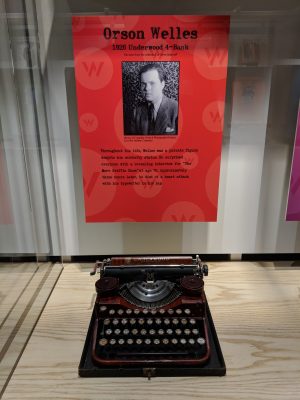
In the digital age, typewriters have been largely relegated to attics and basements. “Tools of the Trade” aims to renew interest in analog writing tools.
The American Writers Museum opened the temporary “Tools of the Trade” exhibit on June 22, 2019. It featured informational and interesting passages as well as a table where visitors could practice on a variety of real typewriters. This interactive approach allowed for engaged learning for all ages.
“I can’t tell you how many times we had a fourth-grade class come in, and on their way out the door, they were like, ‘This was so cool. I didn’t think [it] would be anything like this when they said writing museum,’” Burrow said.
There have also been virtual tours and explanations about how to properly maintain a typewriter for people who are interested in buying one.
Burrow wants visitors of the exhibit to know that typewriters made writing accessible, and he also wants the exhibit to be accessible and interesting to a wide range of people.
“There are different types of learners,” Burrow said, explaining the varied ways the exhibit displays information and engages people.
These tools created masterpieces
By Lauren Holt
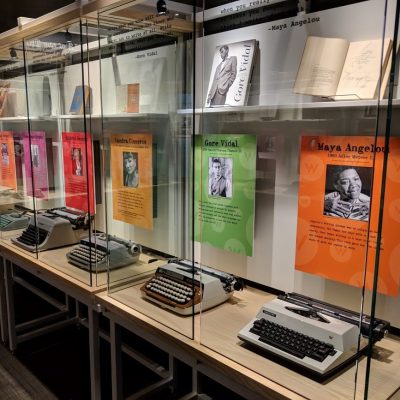
The visually stunning exhibit “Tools of the Trade,” showcases the tools of some of America’s most influential writers.
From Frederick Douglass’s inkwell and pen set to Maya Angelou’s 1980 Alder Meteor 12 typewriter, visitors get a glimpse into the tools that these celebrated writers used to craft their finest work.
The simplicity of the tools is a contrast to the computers most of us compose our work on today.
“There’s no battery indicator, there’s no email popping in, it’s just you and writing,” Burrow said. “I mean, [with a] pen and paper you can start doodling: with a typewriter, it’s just you and the words.”
One has to wonder how much impact these typewriters had on the quality of work and focus for these writers.
The acclaimed Maya Angelou, for instance, solely wrote on her electric keyboard even though she owned a laptop.
“You can think of that intimate relationship with her and her typewriter,” Burrow said.
Hearing that, just thinking about Angelou sitting down at her typewriter, I get chills. Click, click, clicking away at the words.

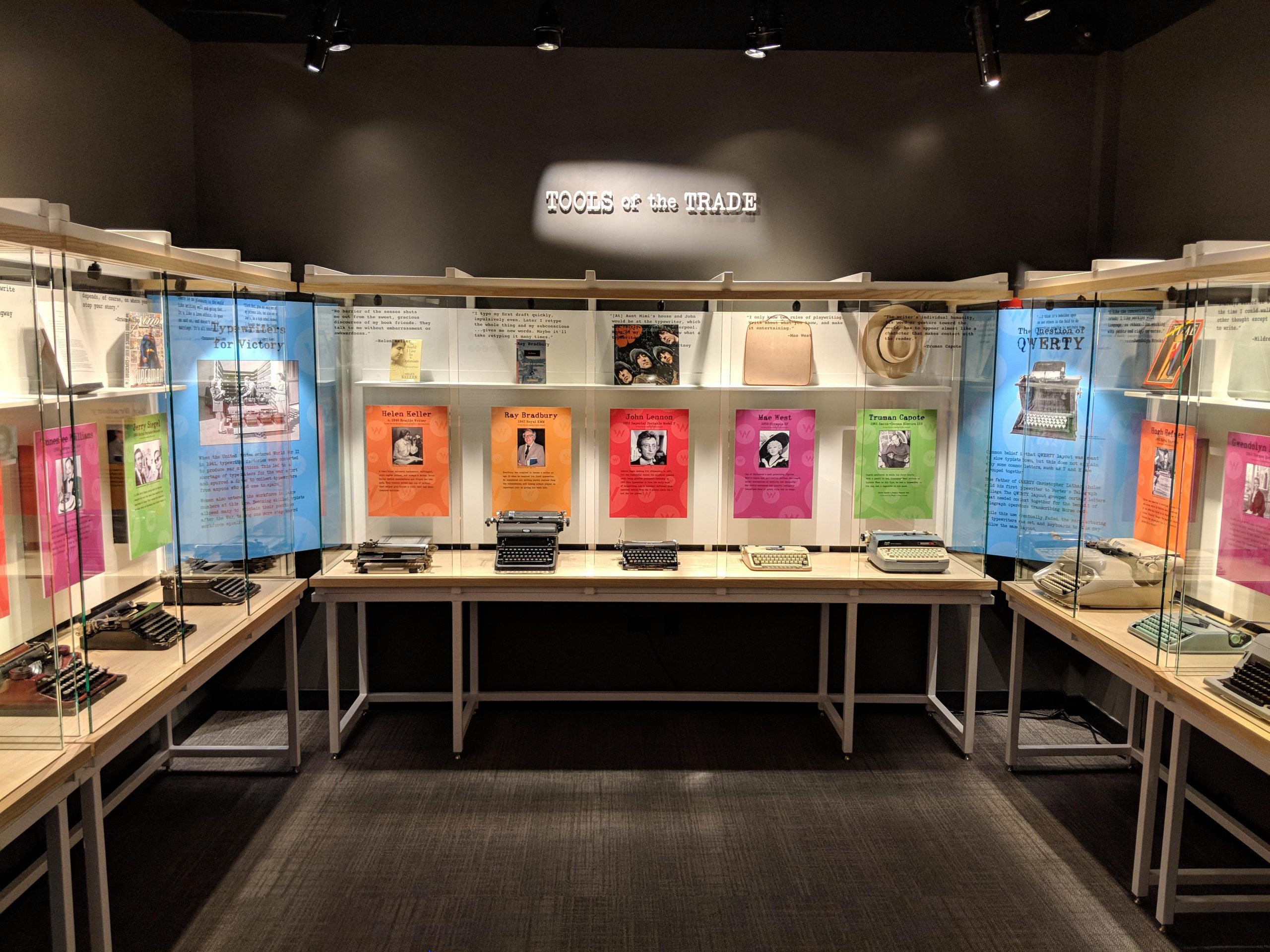

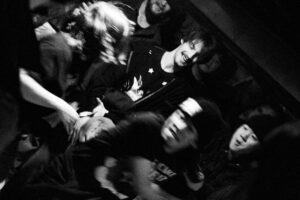
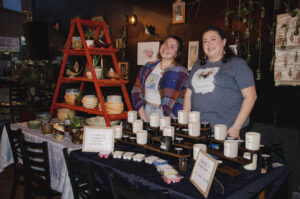
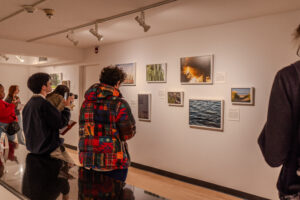


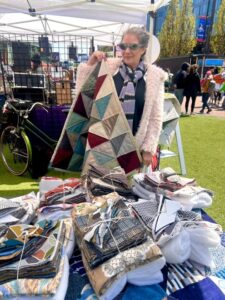
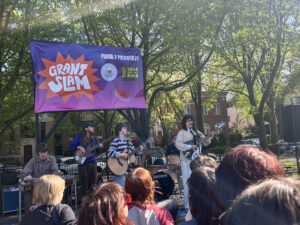

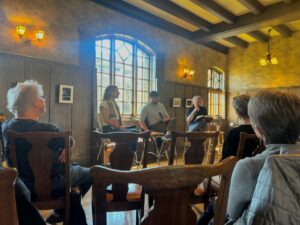
Be First to Comment